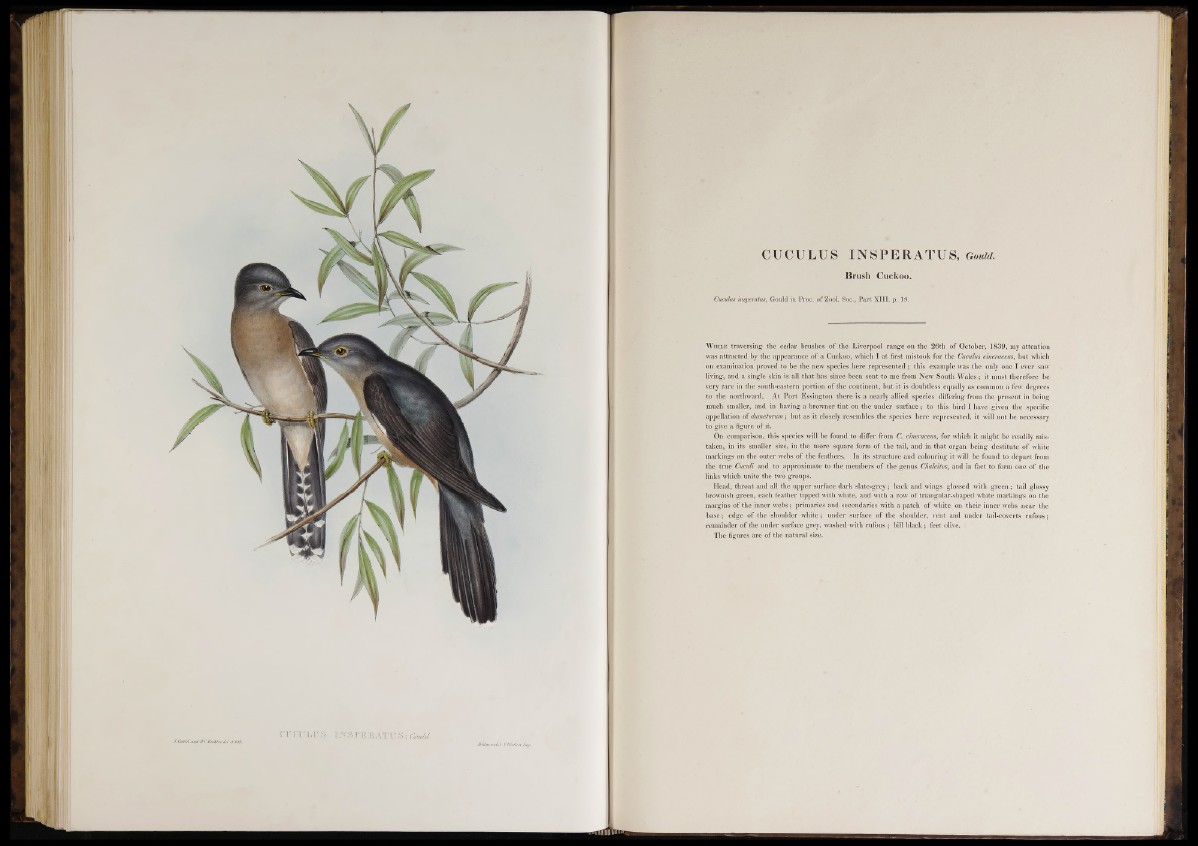
CUCULUS- INSPERATUS, Govid.
Brush Cuckoo.
Cuculus insperatus, Gould in Proc. of Zool. Soc., Part XIII. p. 19.
W h i l e traversing the cedar brushes o f the Liverpool range on the 26th o f October, 1 8 3 9 , my attention
was attracted by the appearance o f a Cuckoo, which I at first mistook for the Cuculus cineraceus, but which
on examination proved to be the new species here represented ; this example was the only one I ever saw
living, and a single skin is all that has since been sent to me from New South Wales; it must therefore be
very rare in the south-eastern portion o f the continent, but it is doubtless equally as common a few degrees
to the northward. At Port Essington there is a nearly allied species differing from the present in being
much smaller, and in having a browner tint on the under surface; to this bird I have given the specific
appellation of dumetomm; but as it closely resembles the species here represented, it will not be necessary
to give a figure o f it.
On comparison, this species will be found to differ from C. cineraceus, for which it might be readily mistaken,
in its smaller size, in the more square form o f the tail, and in that organ being destitute o f white
markings on the outer webs of the feathers. In its structure and colouring it will be found to depart from
the true Cuculi and to approximate to the members of the genus Chalcites, and in fact to form one o f the
links which unite the two groups.
Head, throat and all the upper surface dark slate-grey; back and wings glossed with green; tail glossy
brownish green, each feather tipped with white, and with a row of triangular-shaped white markings on the
margins of the inner webs; primaries and secondaries with a patch of white on their inner webs near the
base; edge o f the shoulder white; under surface o f the shoulder, vent and under tail-coverts rufous;
remainder of the under surface grey, washed with rufous ; bill black; feet olive.
The figures are of the natural size.